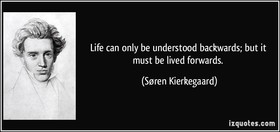
Throughout Kierkegaard’s life, from 1813 to 1855, he was heavily influenced by the devoutly biased religious teachings of his father, which concentrated on Christ’s suffering (Shrider, 2000). Seeing as Kierkegaard was born in Copenhagen and was a child of ‘old age’, Kierkegaard led a somewhat uneventful and unconventional life, due to the fact that his faith was such a marginalised aspect of his life (O’Brien, 1993). His faith soon became what his life and later on, philosophy, resolved around. In his early years of adult hood, Kierkegaard studied philosophy, theology and literature at the University of Copenhagen, where he decided that he must know himself more clearly, before he could know what he would do with his life (Childers, 1991). Over the years, he later became engaged to Regine Olsen, however due to his new found philosophy of Existentialism, he broke of the engagement, believing that domestic responsibility would hinder him in his philosophical calling. His life developed and evolved to seclusion, writing and publishing his beliefs of his philosophy constantly for the next ten years. Only creating a focus on the questions and beliefs of, why do we exist, the existence of individuals, the problems of existence and that truth is subjective (Munroe, 2006). Elapsing to when he died in 1955, to a large extent, the works of Søren Kierkegaard are inseparable from his life. The central concern is his work is to expose what it means for an individual to exist.
